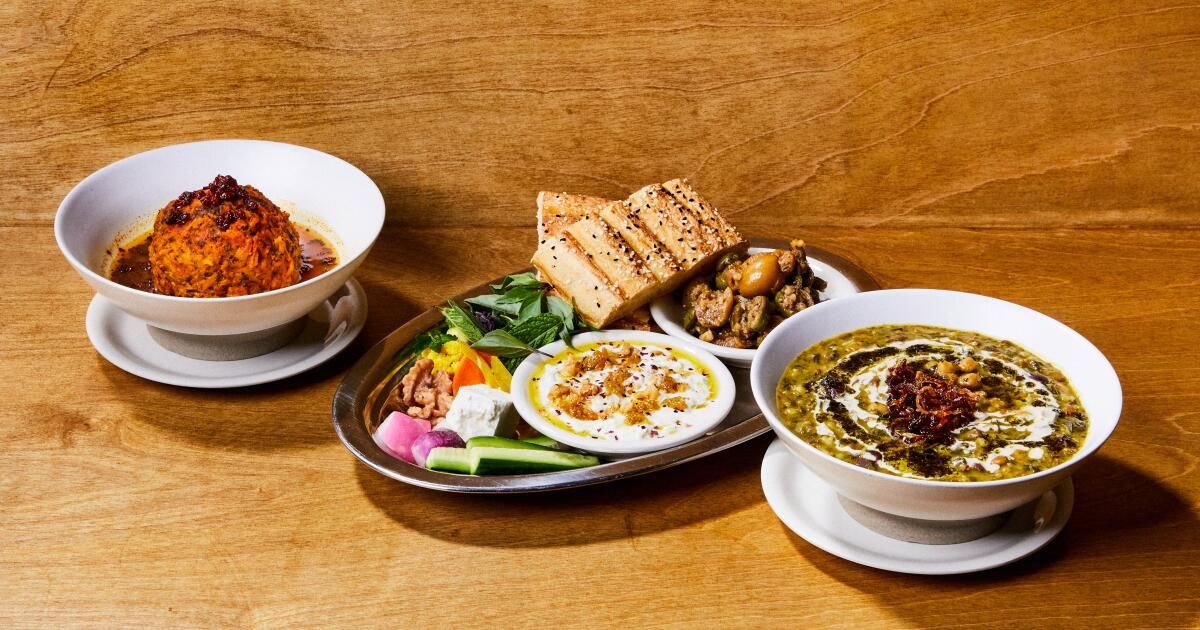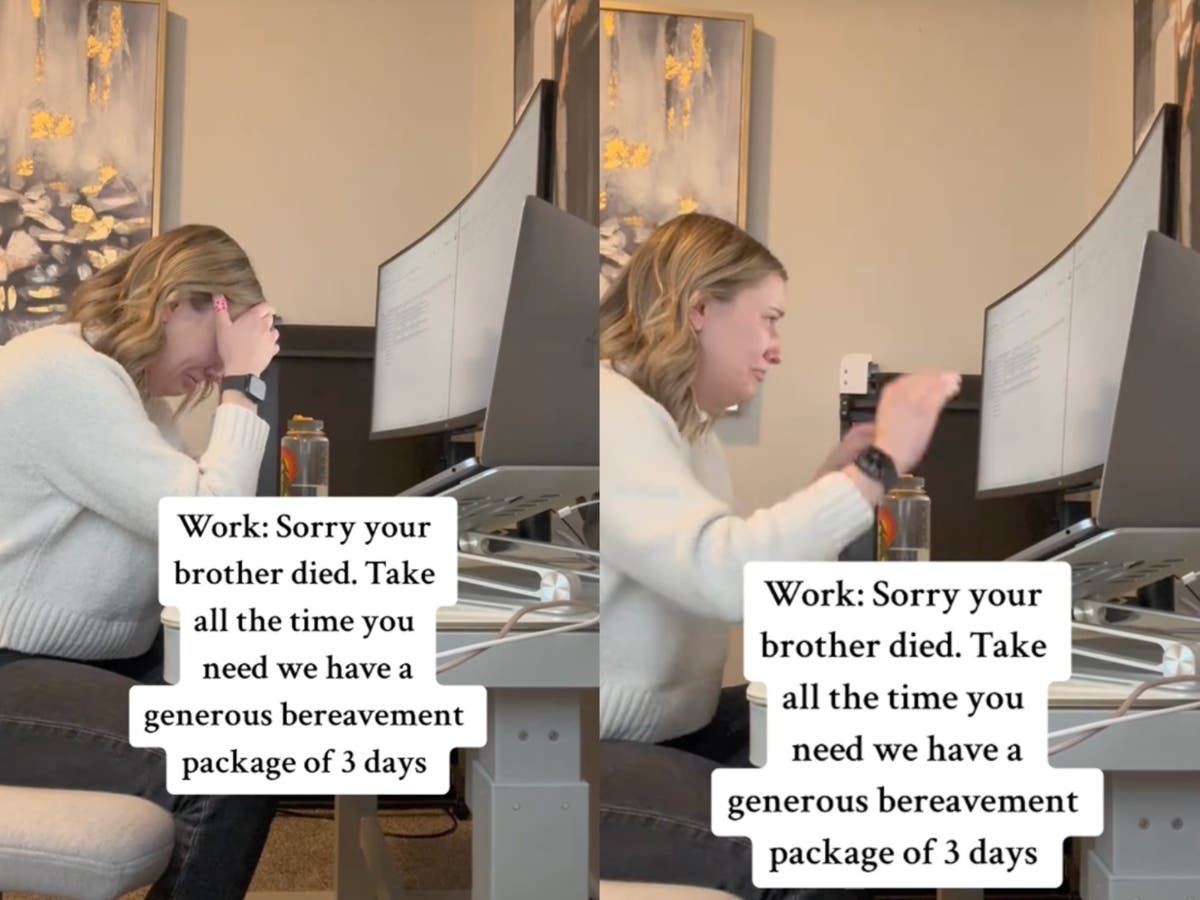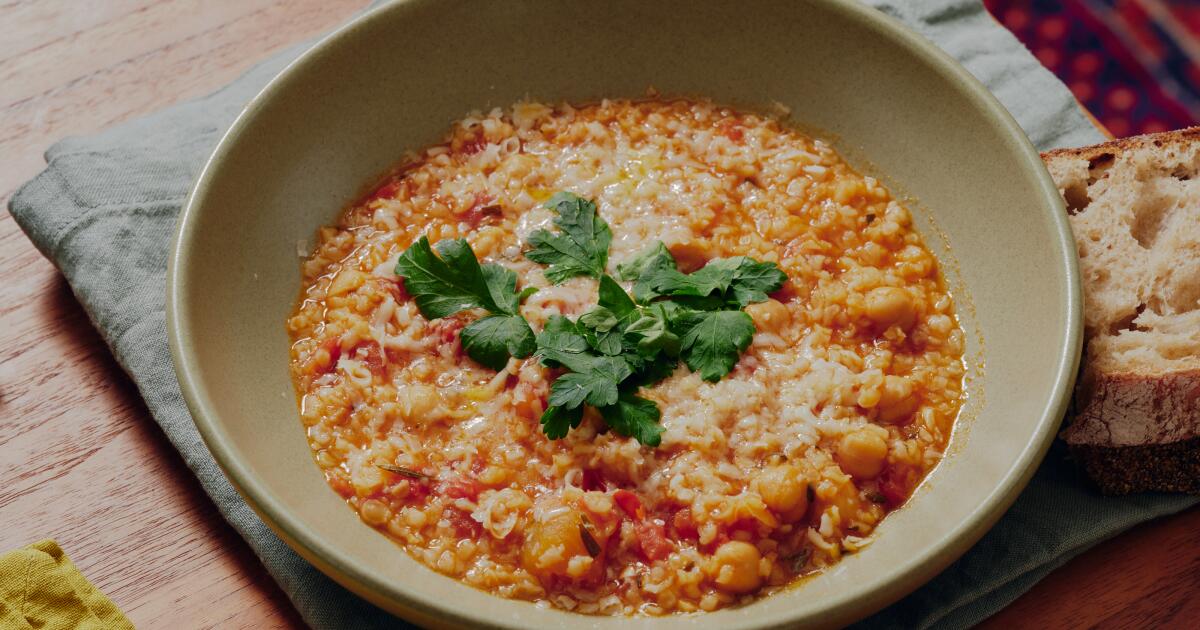It's hard to miss the giant meatball.
Anyone heading to place an order at the counter inside Azizam, as they pass by its patio along Sunset Boulevard in Silver Lake, might instinctively glance at the tables already filled with Persian dishes. Colors parade across plates as if in competition: pickled cauliflower radiating golden turmeric, beet puree turning yogurt deep pink, the painterly play of greens among dark olives, pinches of dried mint on a soup, and bunches of parsley on an appetizer plate.
The Tabrizi kofteh, by contrast, draws attention solely for its stature: a stoic orb, barely larger than a softball, lying in a pool of reddish sauce. Imposing but attractive, its construction at first glance seems frankly fleshy, crowned with dried barberries that shine like a handful of rubies in a film of capers.
Lean in to make out shapes of grains and legumes and wavy sheets of caramelized onions, and to glimpse flecks of herbs. The closer you look, the more you see.
Cody Ma and Misha Sesar, owners of Azizam, met at a party and bonded over their shared Iranian and Chinese heritage.
(Ethan Benavidez / For The Times)
This can be applied to many things on Azizam's concise menu. It is a cuisine that is easily enjoyed to the letter. Yet in its quiet precision—the designed hiss of fragrances, the specific thickness and flavor of yogurt, the crunchy crackle of flatbread—you can also feel that each recipe leads to a good story.
The narrative begins when Cody Ma and Misha Sesar met last decade at a party.
Their host, who worked with Ma at Pine & Crane, introduced them knowing that each of them had parents who shared Iranian and Chinese heritage. Neither Ma nor Sesar had met anyone with the same background before.
Sesar grew up in Orange County, surrounded by her father's large family, most of whom had immigrated from Tabriz, a former center of the Silk Road trade in northwestern Iran. Mom grew up in Omaha. In 1996, her mother opened a restaurant there, still in operation, called Mediterranean Bistro. Her menu combines nice Levantine mezze (hummus, tabbouleh, baba ghannouj, stuffed grape leaves) with kebabs and other Persian-style recipes she had learned from her Tehran mother.
During the pandemic, with Ma away from her restaurant job and Sesar from her career as an art gallery director, they filled their time experimenting with Iranian cuisine. Sesar began baking the soft, crunchy, sesame-flecked flatbread called barbari, which they usually drove to Irvine to buy. The two compared their family's regional variations on thick sandwiches and custard desserts scented with cinnamon, rosewater or saffron, and khoresht, generously spiced meat stews that vary to incorporate each season's fruits and vegetables.
The following year, in June 2021, the couple decided to channel their efforts into a pop-up they called Azizam, a term of affection that translates to “dear” in Farsi.
I took an interest in Azizam immediately, particularly his use of the hashtag #notjustkebabs in his early social media posts. In 2019 I had insightful conversations with Iranian-American cookbook authors Andy Baraghani and Naz Deravian about the disparate experiences between meals in Persian homes and dinners in Persian restaurants.
Family settings often include dishes that may require exceptional workmanship (the mounds of chopped herbs, for example) or stews so nuanced and subtle that they defy the standardization of professional cooking. They agreed that most restaurant menus are intentionally designed around fire-drenched kebabs, creamy sauces and mounds of seasoned rice piled high on platters.
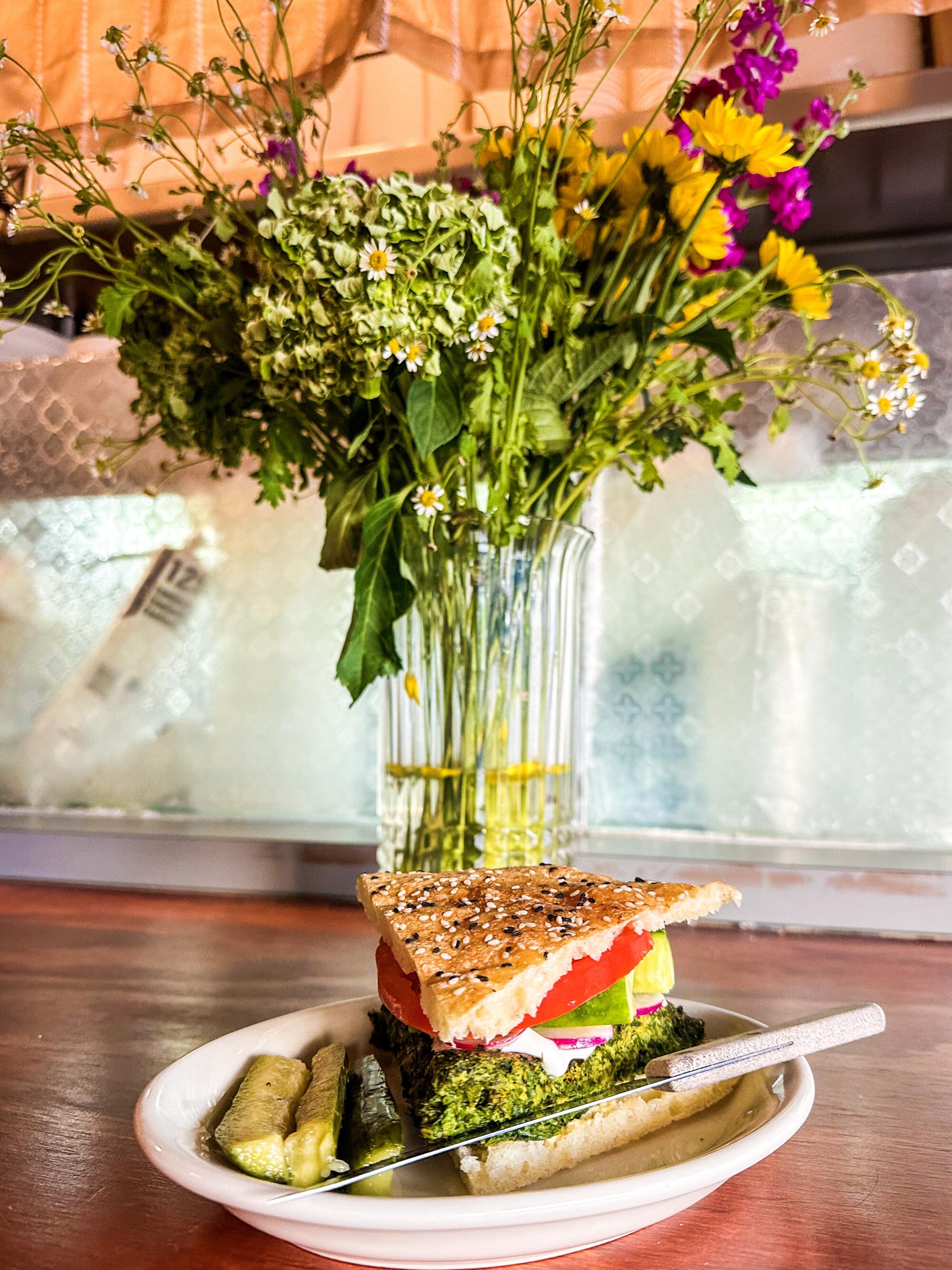
Azizam's kuku sabzi, a gorgeous egg-wrapped leek and herb mulch, serves as the base for a barbaric bread sandwich with tomatoes, cucumbers and radishes spread with garlic yoghurt.
(Bill Addison/Los Angeles Times)
As a mobile operation, Ma and Sesar were unusually agile in blurring those lines. Kebabs can be wonderful, and our city, with its Iranian community of almost 140,000 residents, has many institutions dedicated to them. Locally, it's been much rarer away from home to try mint celery khoresht, a Ma and Sesar spring tonic served with saffron-marinated chicken or fried artichokes. Or find summer-baked eggplant kuku (the prototype of the Persian frittata), which the couple cut into wedges and dressed with roasted tomato, garlic yogurt, and basil. Or, when fall came, the comfort of their sweetly spiced chicken braised with pumpkin and plums.
These dishes usually arrive accompanied by side dishes familiar to restaurant diners: sauces like masto-o-moussir (yogurt with the distinctive flavor of dried wild shallots), mounds of rice, and Shirazi salad full of chopped tomatoes and cucumbers. pieces. .
After honing their culinary aesthetic for nearly three years, Ma and Sesar gave Azizam a stationary home in a space that looks almost built into the side of a hill. The courtyard feels halfway between a sunlit shelter and, in its far corners, a bunker. Its comfortable casualness fits the no-reservations diner vibe (the restaurant is open for dinner as well as lunch, a huge daytime win for Silver Lake) and the food has enough visual beauty to give the place character.
A plate of mazeh elegantly sets the tone. Halved walnuts, a cube of feta, a square of barbari and chopped herbs line the spread, which is served with two choices from a half-dozen cold options: olive sauce with the sweet-tart flavor of pomegranate molasses, slaw Shirazi, masto-o-moussir or another variation of yogurt with a meticulous texture, pickles or mirza ghasemi, an eggplant and tomato sauce. I usually order all the yogurts, with separate orders of salad and olives.
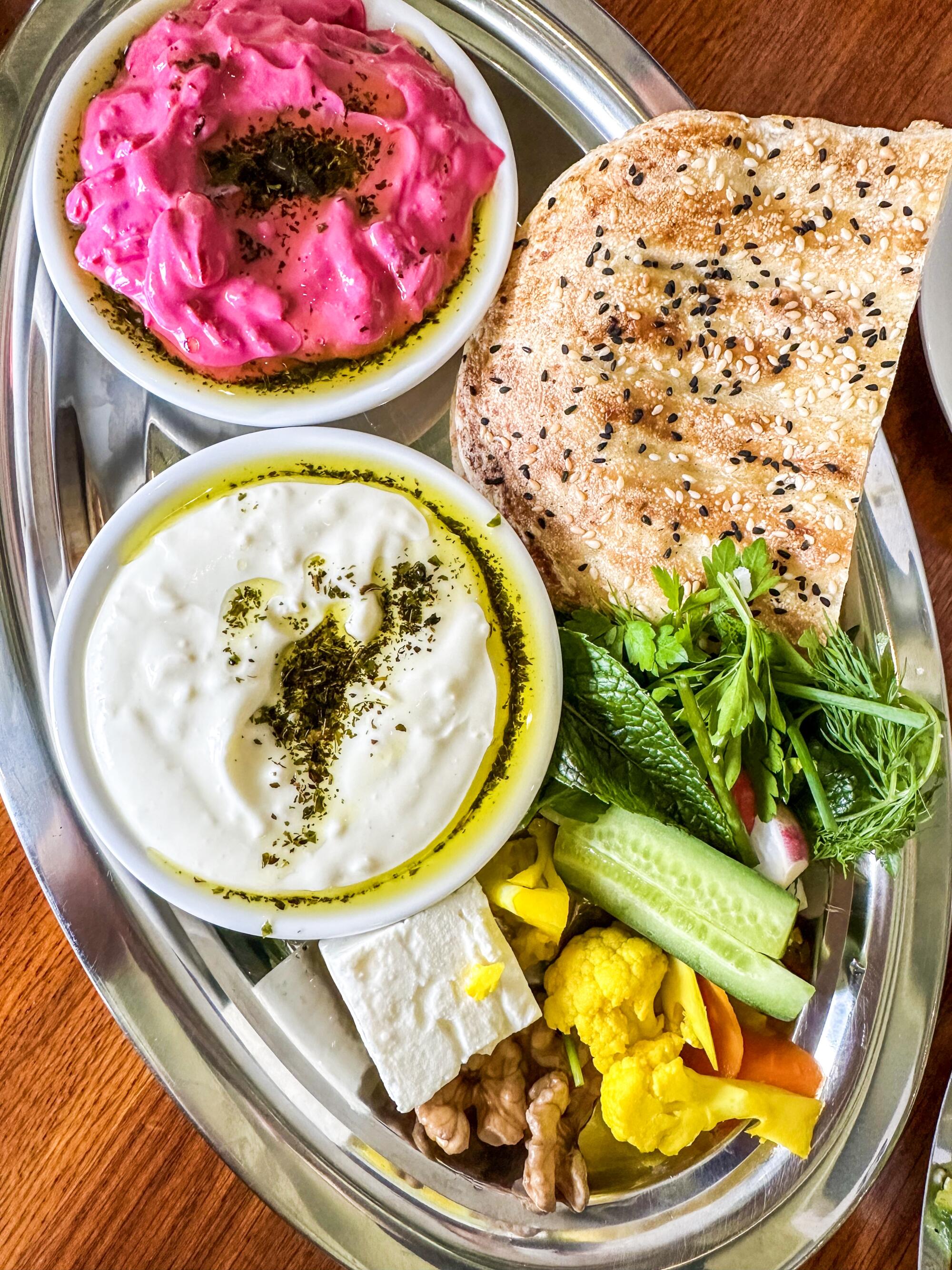
A maze plate at Azizam can include two cold dishes, including a couple of variations of yogurt sauces, with herbs, feta cheese, nuts and barbarian bread.
(Bill Addison/Los Angeles Times)
If I'd had one quibble with Azizam, the pop-up, it's that the occasional sandwiches Ma and Sesar made could be unbalanced: heavy on bread, light on fillings.
The problem has been solved in the restaurant. They are likely to change over time, but currently two knockouts are competing for attention. Kuku sabzi, a gorgeous egg-bound mulch of herbs and leeks, anchors a meatless stack of tomatoes, cucumbers, and radishes smeared with garlic yogurt. The other tops beef tongue scarves (it tastes like barbecue) with tomatoes, yogurt, and a brightening touch of fresh herbs. Eastside fans of Attari Sandwich Shop in Westwood, where beef tongue is a staple, might be able to satisfy their cravings with a shorter trip.
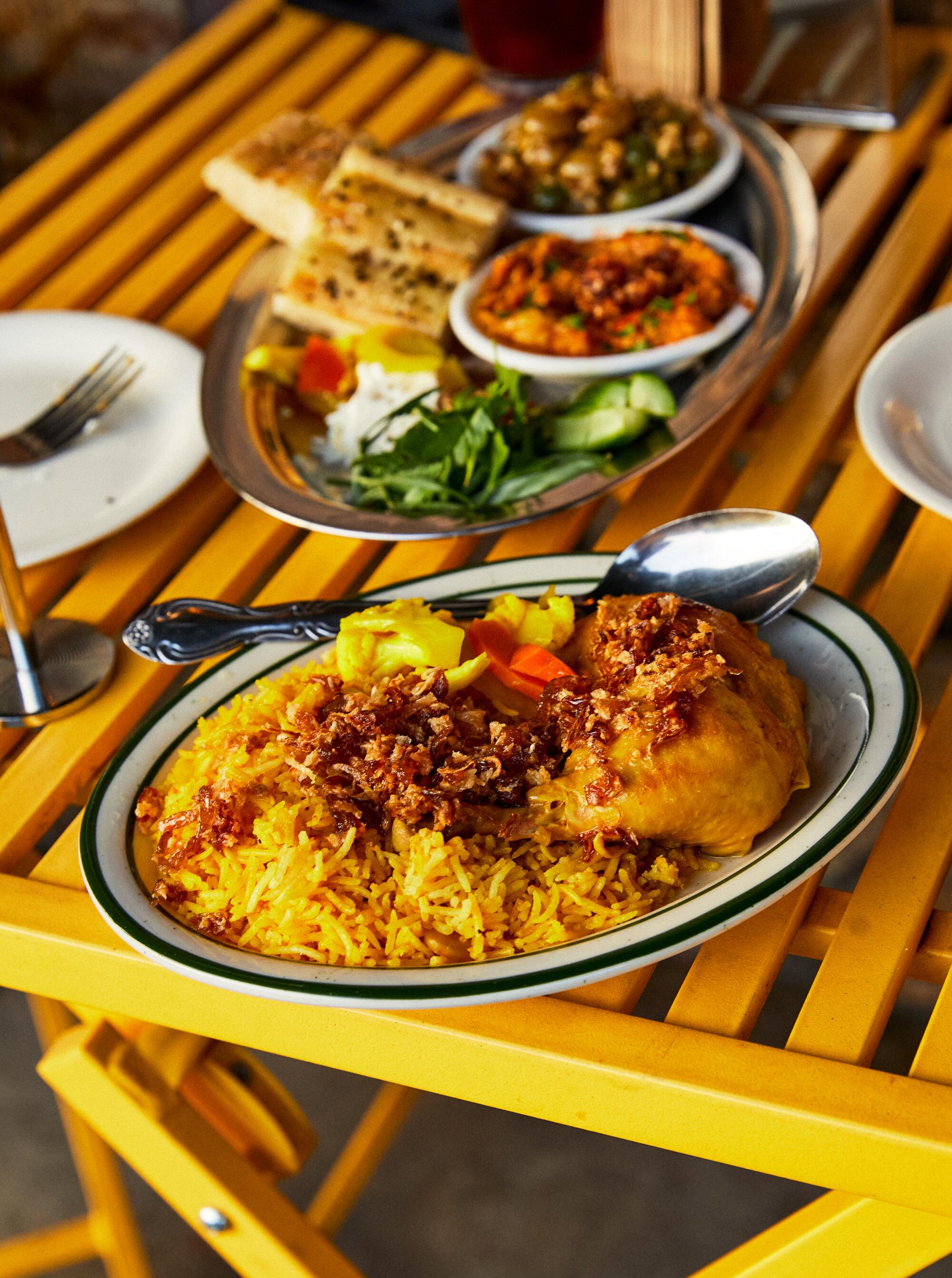
Turmeric Braised Jidori Chicken is served with yellow bean rice with fried shallots and homemade pickles. (Yes, you can add a fried egg.)
(Ethan Benavidez / For The Times)
Even when the weather warms, don't overlook the ash-e-jo, the hearty soup of grains (predominantly barley), spinach and beans with swirls of fermented whey and mint oil and fried onions as a final garnish. I love the look on my friends' faces at the first spoonful, mirroring my own reaction: the disarming, melting lightness and the penetrating flavors, sometimes pleasantly acidic and richly herbaceous.
A main dish like turmeric-marinated chicken, braised until tender and served over rice, is one that the Sesar and Ma families cook almost identically.
The Tabrizi kofteh, which they included on some of Azizam's first menus and remains a signature dish, best reflects their triumph as collaborators.
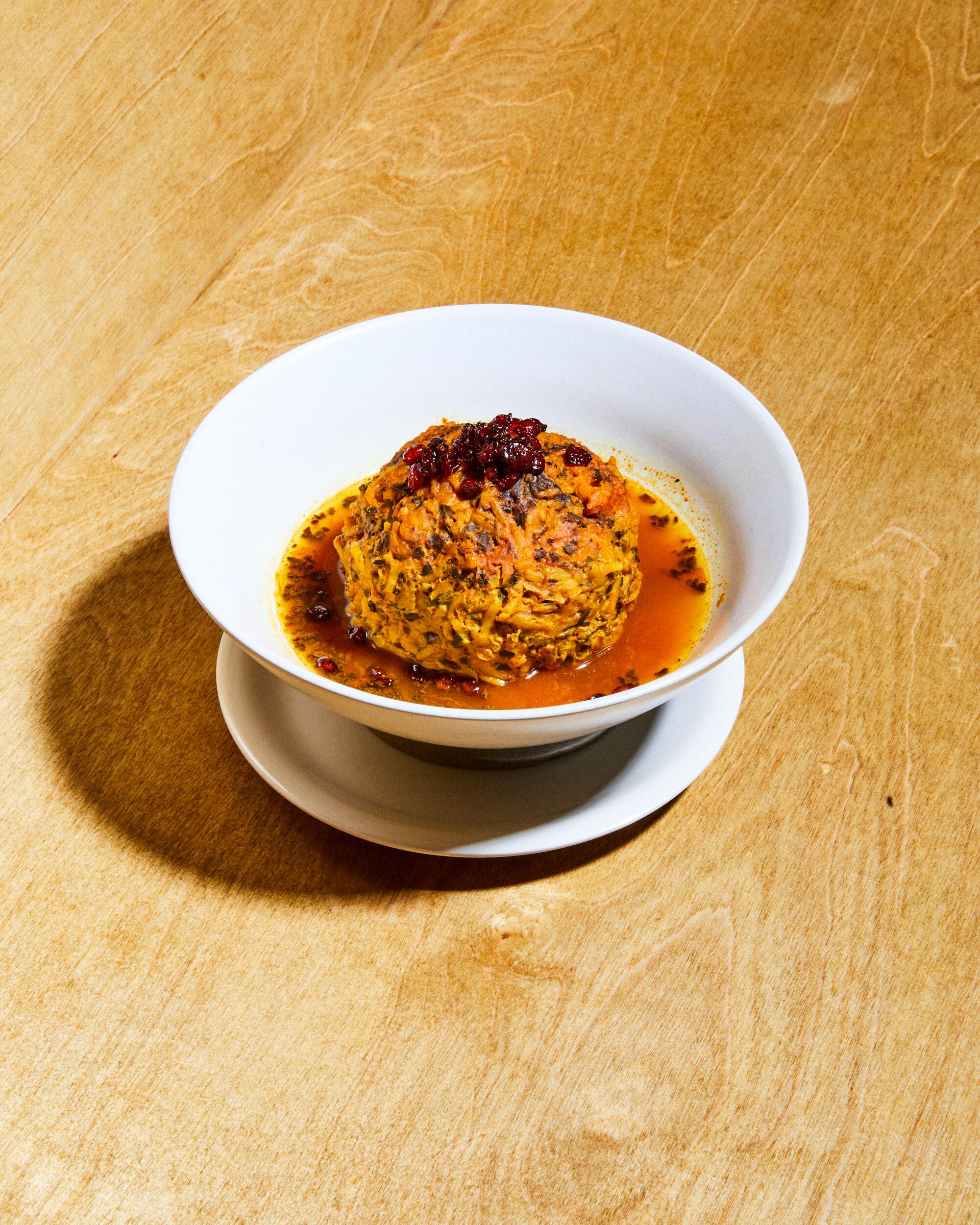
Kofteh Tabriz is Azizam's glorious, meaty meatball, filled with dried fruits and nuts and topped with barberry.
(Ethan Benavidez / For The Times)
Among the ground beef, the mix also contains rice, split peas, dried tarragon and summer savory, and freshly chopped cilantro, parsley, and chives. Mom's grandmother taught her the technique of tossing wads of kofteh back and forth between her hands to keep the texture delicate and barely contained within itself. The center keeps a secret: dried apricots, prunes, barberries and walnuts, in the style of Sesar's family recipes.
They bake the kofteh in the oven (traditionally it is made on the stove) in a tomato-based electric sauce with dried Persian lime to give it its distinctive and seductive sour notes. True to Ma's lessons, the sphere is so tender that it crumbles with a fork, falling beneath its complexities and revealing its sweet core.
It is the centerpiece of almost all Azizam tables and its popularity has additional meaning for Ma and Sesar.
Ma's mother, Shohreh Ma, first tried to put it on the menu at her restaurant in Nebraska 30 years ago. Kofteh is clearly laborious and her clientele never quite warmed to the dish, so she stopped making it and worried that Ma and Sesar would repeat her mistake in her efforts.
Knowing it's a consistent success has validated the cooking lessons Shohreh and her family passed on to Ma, who says, “She always says, it's a dream come true that you can do this.”
For a proud mother and for the Persian food culture of Los Angeles.
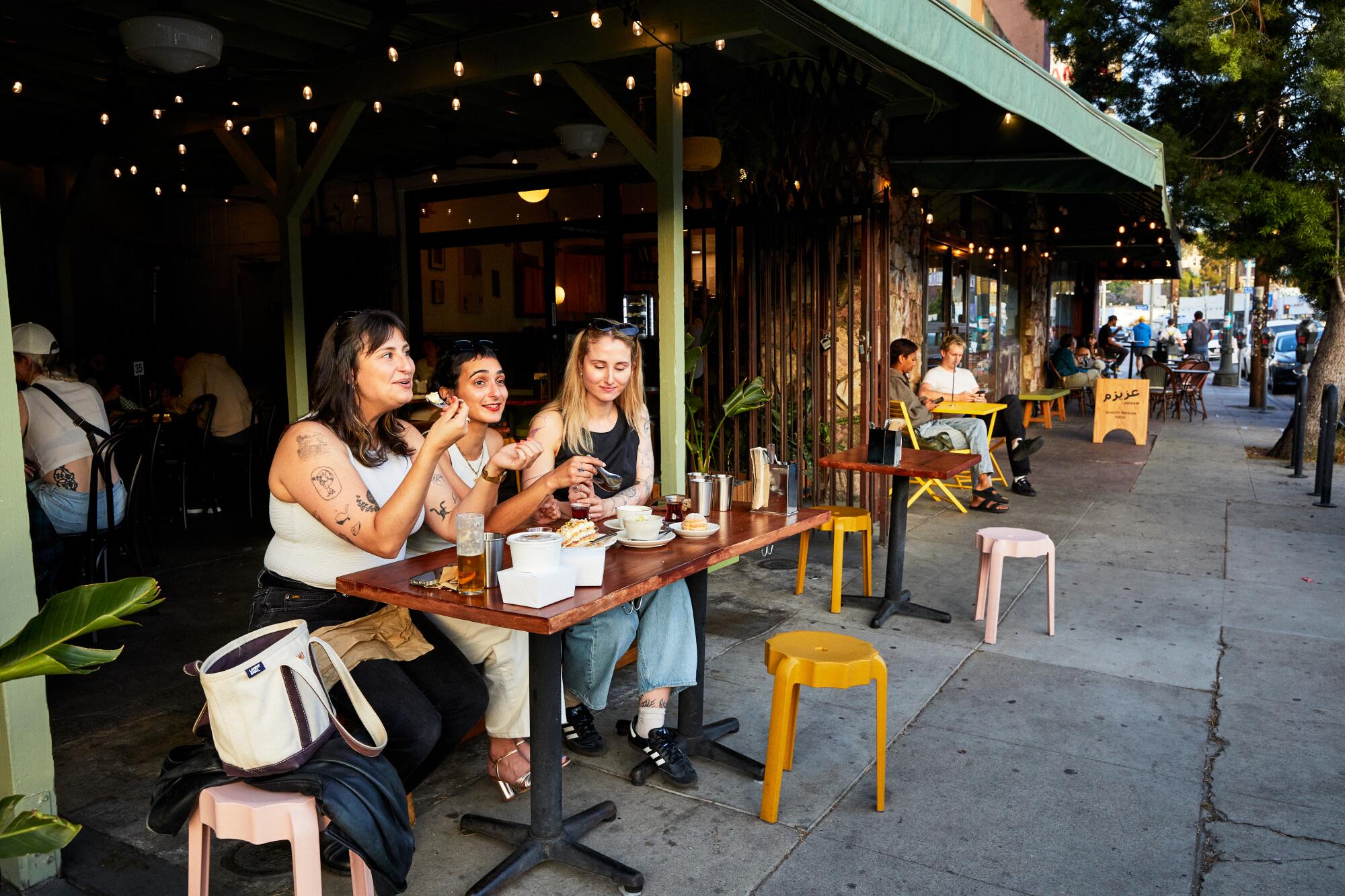
Enter through the open-air patio, where diners enjoy views of Sunset Boulevard and sip homemade shrubs and spritzes.
(Ethan Benavidez / For The Times)
Azizam
2943 Sunset Blvd., Los Angeles, (323) 928-2286, azizamla.com
Prices: Small cold plates $5-$6, sandwiches $10-$12, most entrees $14-$16, desserts $5-$9.
Details: Open from noon to 10:00 p.m. Thursday to Sunday and from 5:00 p.m. to 10:00 p.m. on Mondays. Wine and beer (and some great non-alcoholic drinks like tart cherry lemonade), street parking.
Recommended dishes: Kofteh Tabrizi, ash-e-jo, turmeric braised chicken over rice, yogurt sauce, beef tongue sandwich, kuku sandwich and for dessert, sharini Napoleoni.

